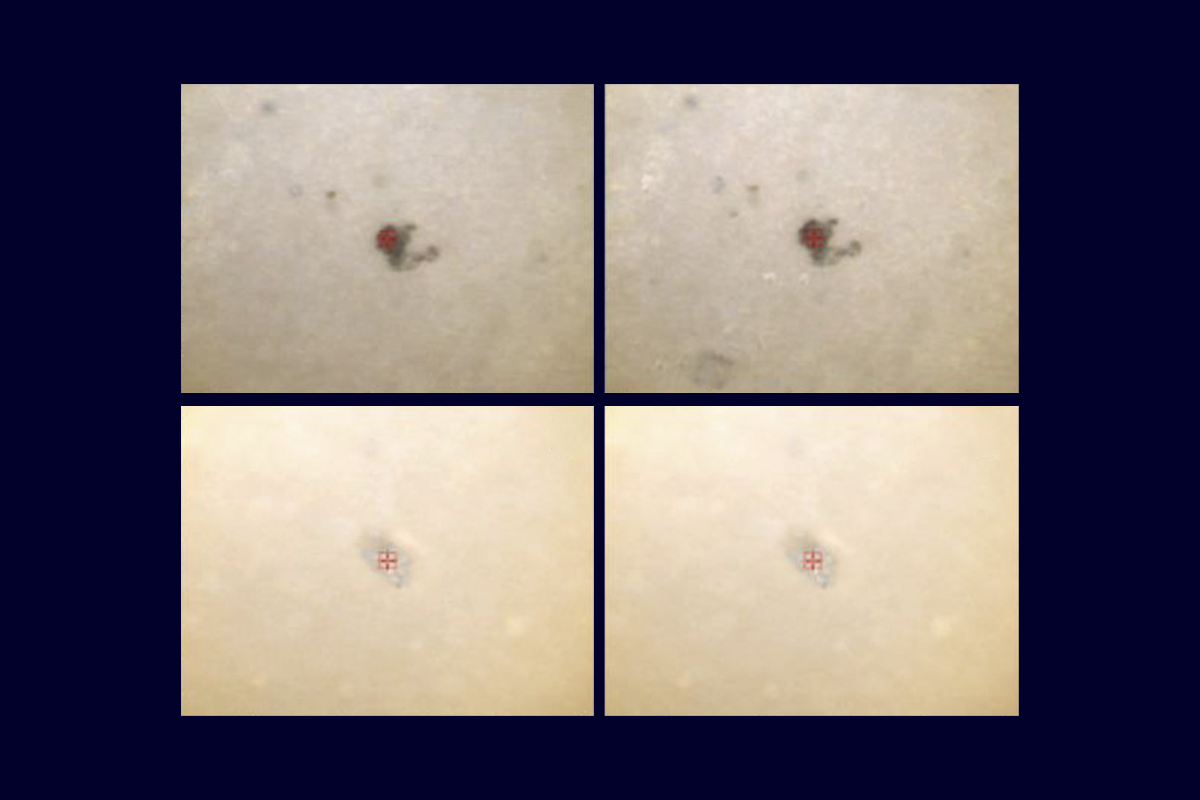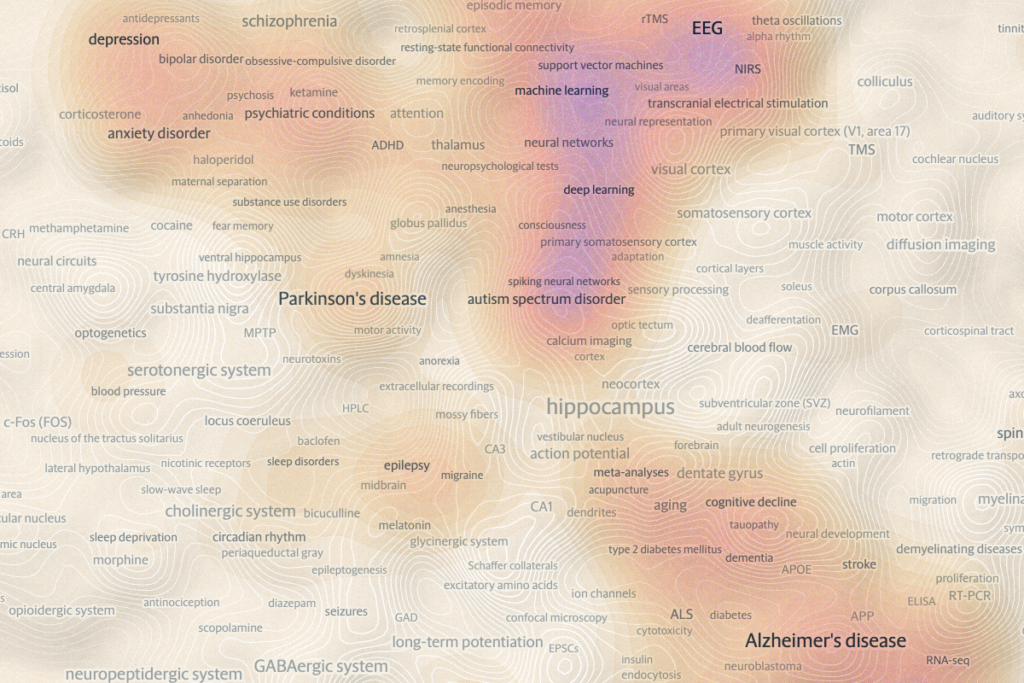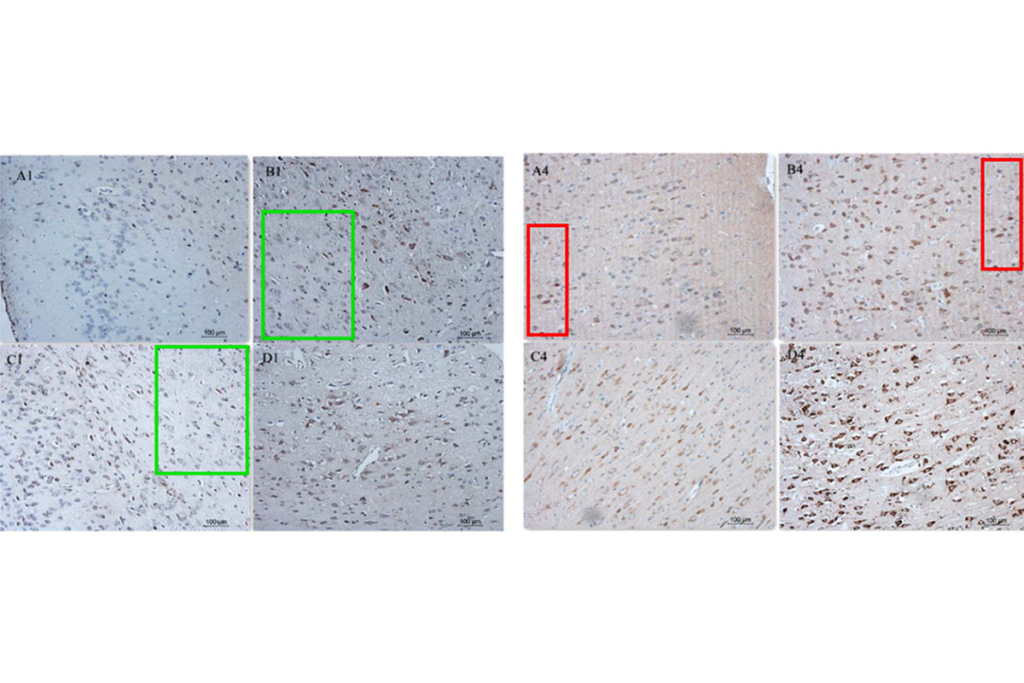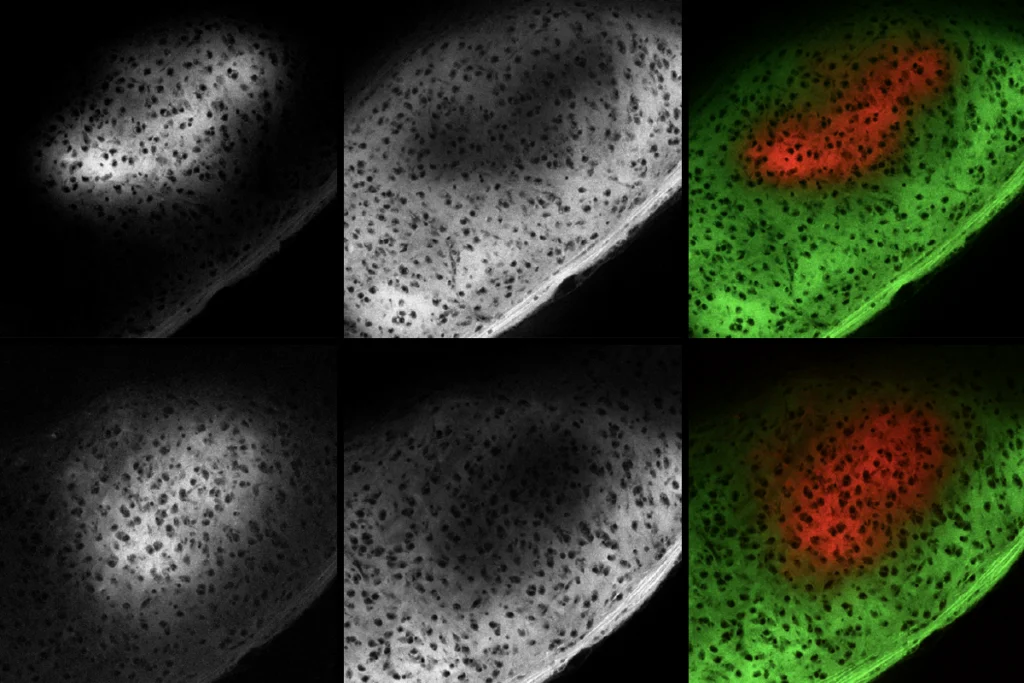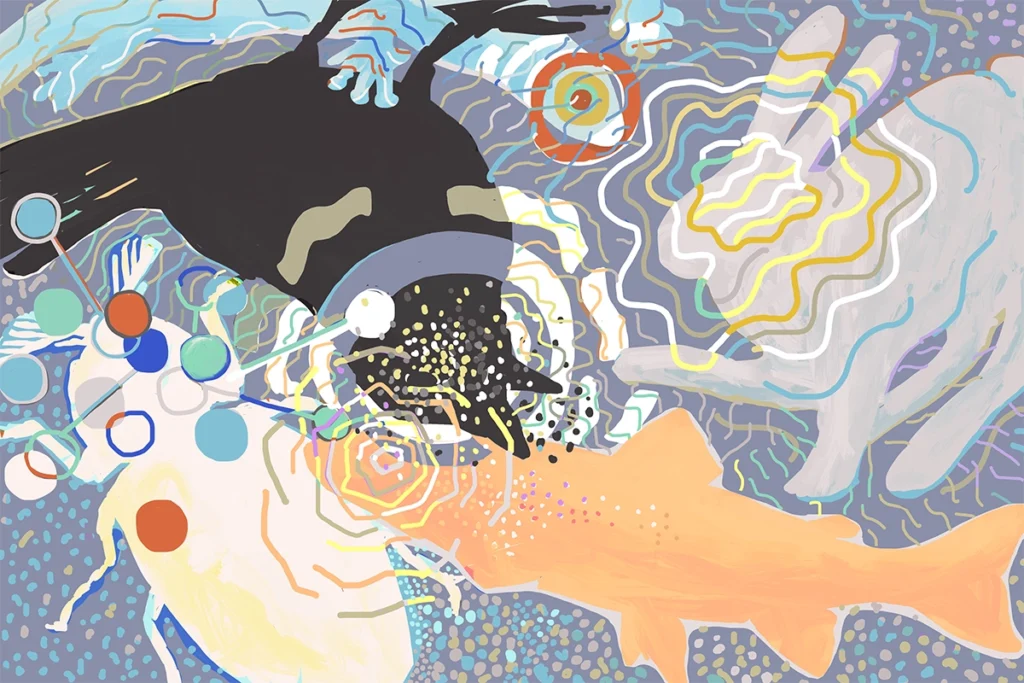A highly publicized new paper that reported high levels of microplastics in human brain tissue contains duplicated images, according to the study’s principal investigator. The duplicates likely do not affect the main findings of the work, two microplastics researchers who were not involved in the study told The Transmitter, but the amount of microplastics may have been overestimated because of other methodological issues.
The images depict particles isolated from postmortem human brain tissue and later analyzed to determine their chemical identity. The duplications were first identified by an anonymous comment posted on PubPeer, a post-publication peer-review site, earlier this month.
Principal investigator Matthew Campen confirmed that the three sets of images in question had been duplicated, first in a statement he sent to The Transmitter and later in a reply to the comment on PubPeer.
“These images from ATR-FTIR [an analytical chemistry method] in the supplement were assembled without enough attention to detail,” Campen, professor of pharmaceutical sciences at the University of New Mexico, told The Transmitter in an email. “We have the correct images and will submit shortly. The mistake is purely clerical and in no way alters the conclusions of our manuscript.”
Nearly 400 news outlets and other websites have covered the paper since it was published on 3 February in Nature Medicine, according to Altmetric, a data science company that tracks online mentions of research articles. “We are aware of the concerns flagged on PubPeer and are looking into the matter. We are committed to addressing any issues whether they are raised during the submission process for a paper or post-publication, and take our responsibility to maintain the accuracy of the scientific record very seriously,” a spokesperson for Nature Medicine told The Transmitter in an email.
Brain tissue samples collected in 2024 from 24 people contain a median of 4.9 milligrams of micro- and nanoplastics per gram of tissue, Campen and his team reported. Scaled up, that would mean an average brain contains a plastic spoon’s worth of microplastics, Campen told several major news outlets.
The duplications likely do not alter the conclusions of the paper, say microplastics researchers Phoebe Stapleton, associate professor of pharmacology and toxicology at Rutgers University, and Martin Wagner, professor of biology at the Norwegian University of Science and Technology.
The images are “really just examples of the particles that they analyzed,” Wagner says. But the investigators may have “massively overestimated the mass of microplastics in their samples,” he adds.
The study reports microplastics levels in the brain that are “higher than those reported in sewage sludge, which seems unlikely,” says Oliver Jones, professor of chemistry at The Royal Melbourne Institute of Technology, who was not involved in the work.
Last year, a group in the Netherlands reported that black plastic kitchen utensils release flame retardants at levels nearing the safe exposure limit set by the U.S. Environmental Protection Agency. The researchers later corrected the study because the safe exposure level they calculated was only one-tenth of the actual limit.
T
o quantify the amount of microplastics in biological tissue, researchers must isolate potential plastic particles from other organic material in the sample through chemical digestion, density separation or other methods, Wagner says, and then analyze the particles’ “chemical fingerprint.” This is often done with spectroscopy, which measures the wavelengths of light a material absorbs. Campen and his team used a method called pyrolysis-gas chromatography-mass spectrometry, which measures the mass of small molecules as they are combusted from a sample. The method is lauded for its ability to detect smaller micro- and nanoplastics than other methods can, Wagner says, but it will “give you a lot of false positives” if you do not adequately remove biological material from the sample.“False positives of microplastics are common to almost all methods of detecting them,” Jones says. “This is quite a serious issue in microplastics work.”
Brain tissue contains a large amount of lipids, some of which have similar mass spectra as the plastic polyethylene, Wagner says. “Most of the presumed plastic they found is polyethylene, which to me really indicates that they didn’t really clean up their samples properly.” Jones says he shares these concerns.
In addition to polyethylene, the investigators reported higher concentrations of polypropylene and polyvinyl chloride in the tissue collected in 2024 compared with 28 tissue samples collected in 2016. “Notably, all show the same trends of increasing over time,” Campen told The Transmitter via email, which indicates to him that the results are not an artifact. “It is difficult to argue that brain chemistry has evolved over this short period of time.”
But the investigators also did not provide adequate data about potential plastic contamination during the experiment, Wagner and Jones say.
“There was extensive description of our procedure in the supplemental information,” Campen told The Transmitter in an email. “It is very difficult to make everyone happy and guess what details are needed to appease every scientist.”
Despite the methodological limitations, it is clear that micro- and nanoplastics are indeed present in human brains, which is concerning and warrants further study, Wagner says. But, he adds, “I think we should be more cautious about the limitations of our work before we tell people, ‘You have a spoonful of plastics in your brain.’”
